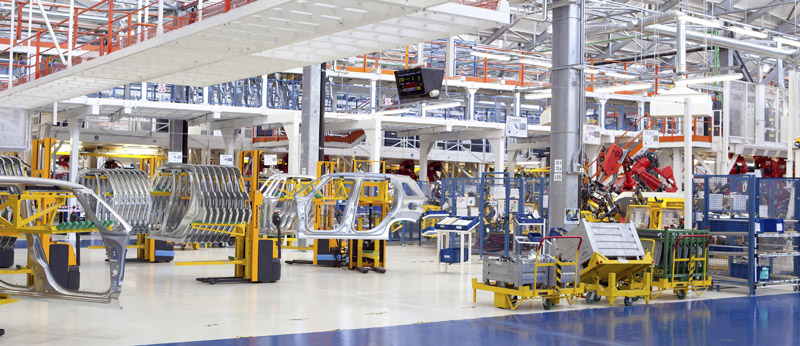
26 Jul Moving Beyond the Safety Performance Plateau
To improve safety performance in any industry there is typically a progression through a number of phases, each with different characteristics. In simplistic terms, the major phases are:
Eliminating intrinsically unsafe conditions
This phase tends to focus on physical conditions, tools, and equipment, and involves looking for opportunities to engineer unsafe conditions out of existence.
Developing safe work procedures and safety management systems
This includes the specific procedures industries use to reduce the potential for harm when dealing with hazards that can’t be completely eliminated, such as working with sources of energy.
Error reduction
Error reduction involves creating an environment in which the likelihood of errors is reduced, and reducing the potential for harm when inevitable human errors occur.
In companies that truly excel in safety, the principles involved in all three phases are well understood and, as such, the organization is able to apply the most appropriate response for the conditions.
The challenge for organizations lies in the overlapping nature of these three phases, each requiring very different types of management effort for success to occur. In companies that truly excel in safety, the principles involved in all three phases are well understood and, as such, the organization is able to apply the most appropriate response for the conditions.
A common pattern in many companies is that a degree of success is achieved with one particular approach to safety, but then the safety performance “plateaus” and improvement stops. This does not mean there was anything wrong with the steps taken. The approach was appropriate for that particular phase of the safety journey, but it is not appropriate for the next one.
The third phase of safety improvement, error reduction, involves reducing the frequency and impact of normal lapses in mental focus and memory. True success in this phase involves strategies designed to positively influence the workplace and employees to reduce the potential for human error. Common examples include using a pre-flight checklist on an aircraft to reduce the potential for well-trained pilots to make an error, or designing highways with substantial clearings on each side to allow for unobstructed peripheral vision.
Safety improvements in many companies stall at this stage of the journey because of the unrecognized differences in what it takes to be successful at reducing errors when compared to engineering intrinsically safe equipment or writing safe work procedures.
This article attempts to provide a simplified exploration of the challenges associated with this third phase of safety improvement.
Reducing the number of errors made by otherwise well-intentioned employees and the harm that results from these same errors requires an understanding of a few aspects of the way our minds work. The principles arise from the study of cognitive psychology and the relationship between our conscious, subconscious, and unconscious minds. The conscious mind processes active thoughts and things we need to remember to do. The subconscious mind allows us to do things like walking to a destination without consciously thinking about each step. The unconscious mind takes care of activities like breathing while we walk.
With respect to cognitive psychology, the major implications which impact industrial safety performance are:
- The upper limit in the number of thoughts that any of us can maintain in our conscious minds at a single point in time.
- The lack of a guarantee that we will maintain perfect mental focus over extended periods of time.
The biological challenge with keeping thoughts in the conscious mind is that it requires more energy than subconscious or unconscious processing. As a result, our brains are hard-wired to move functions that don’t need conscious processing to the subconscious or unconscious levels.
When it comes to being able to keep specific thoughts or memories active in our conscious minds, studies indicate that the average person can maintain four to seven discrete thoughts at a single point in time. The implication is that when a person is forced to consider a new thought, one of the previous thoughts is “squeezed out” of the conscious mind and becomes a memory. This is the reason why a person who notices a steel H-beam to duck under upon entering a crawl space will forget about the beam on the way out and bang their head – they had already focused on another task, “squeezing out” the beam from conscious thought.
A convenient example of the challenges associated with maintaining perfect focus over time is the feeling of driving down a road and realizing that we don’t remember that last few kilometers. Even when we are not suffering from fatigue (although that will increase the tendency), our brains are programed to allow us to consider conscious thoughts (such as thinking about the work day), and relegate less thought-intensive functions (such as driving on the open road) to the subconscious level. The interesting thing is, we don’t drive off the road when it happens.
These characteristics about the way our minds work have very real implications for companies attempting to improve safety performance, and yet many companies routinely do things which don’t respect this reality. For instance, overloading employees with things they must remember to do, either in meetings or during work assignments, is doomed to fail once the person’s conscious thought threshold is exceeded. Using slogans, such as “keep mind on task,” is also of questionable value as it does not prevent people’s minds from wandering at some point in the future.
While understanding the limitations of the mind is important, there are also several helpful things about how the human mind works that can and should be used when developing safety improvement strategies.
- The human mind is tuned to recognize movement. An object entering a person’s peripheral vision will snap that person to attention. This comes from our survival instinct in dealing with predators, and serves to wake us up when a car approaches the intersection we are driving up to.
- Humans are also very good at pattern recognition. We see things that interrupt patterns, it’s easy to identify the one leaning column amongst all the straight ones, or the bump in the otherwise flat floor.
- Another (potentially) helpful human characteristic is our tendency to develop behavioural habits. An established habit means that even when we don’t have perfect attention on the task at hand, we still do things the way we were trained to do them. Looking both ways before we cross a road or reaching for the seat belt when we get into a car are examples.
…overloading employees with things they must remember to do, either in meetings or during work assignments, is doomed to fail once the person’s conscious thought threshold is exceeded.
 Phase 3 – Safety Strategies
Phase 3 – Safety Strategies
Given the challenges associated with the way the human mind works, the logical question is, “What can be done to improve safety at work?”
Some tactics include:
Reduce Visual Complexity
Imagine walking into a strange location for the first time. You can’t rely on previous experience so you must use your conscious mind to navigate the scene in front of you. Drivers who enter a new city for the first time drive slower to allow their brains to process the data their eyes send to the conscious mind. Companies who want to allow their employees to focus on the task at hand make an effort to simplify the visual impact of the workplace to reduce environmental complexity. Simple strategies are employed, such as designing the workplace with straight lines and surfaces, storing clutter in cabinets, simplifying signage, and using colour consistently. These are all powerful techniques to reduce the environmental demands placed on employees, allowing them greater opportunity to focus on the tasks at hand. Good housekeeping is part of reducing visual complexity, but there is more to it than just sweeping the floor and keeping things tidy.
Reduce Mental Clutter
Mental clutter arises from overloading employees with things to be kept in the conscious mind. An uncontrollable challenge for employers is that some employees arrive at work with personal concerns, already impairing their capacity for conscious awareness. Regardless of limitations, a number of strategies still make sense when it comes to avoiding mental clutter in the workplace.
- Avoid training sessions that attempt to cover long, random lists of facts that employees are supposed to remember since they create mental clutter and won’t be retained. Conversely, training programs that explore consistent concepts help clarify thinking and will be retained.
– Many companies fail in their safety induction training because they overload new employees with facts they can’t possibly process
- Provide instructions at a pace the employee can absorb, rather than at the pace the supervisor wants to deliver.
– A humorous case of overloading is the golf pro who tells the golfer to “keep your left elbow straight, your right elbow bent, rotate the wrists, transfer weight to the left foot, follow through, keep your head down, finish facing the target.” And then they wonder why the golfer completely misses the ball.
- Use checklists as an error reduction assist, not an instruction manual.
– Airlines and surgeons know that the training to be competent in each profession is extensive. At the same time, well-designed checklists can still help the best pilots and surgeons avoid common errors. Using a checklist is not a reflection of skill.
– Industrial companies commonly overdo checklists in a flawed attempt to cover every single thing a person needs to do, which creates mental clutter.
Build Positive Behavioural Habits
The concept of intentionally building positive behavioural habits is bigger than the typical approach taken by most companies. Too many companies assume that just “telling” a person to do something creates the knowledge that leads to desired habits, but rarely does.
Most of us have developed the habit of looking both ways before we cross the street. A more sophisticated example is the way a fighter pilot is trained to scan their field of vision. They are specifically trained to look left and right, then to their instruments, then back to the field of vision, in a very specific pattern. In military flight school, the training is maintained until the pilot performs the correct visual scan instinctively. Developing an instinctive visual scan will alert the pilot when there is movement or a change anywhere in the field of vision that may pose a threat.
Companies who excel at safety performance understand that it is incumbent on the company to go beyond telling an employee to do something in training. Behaviours must be repeated at a high frequency over a period of time to become a habit. Only then can the company rely on consistent behaviour even if the employee’s focus is on another part of the job.
Error Reduction Implementation
Pursuing an error reduction strategy to improve safety is not something that every company elects to do. However for those that do, the results can be very significant. The airline industry is an example of an industrial sector which has really tried to understand the safety impact of the way our minds work.
Other companies and other industries can implement their own strategies to improve safety through error reduction and it need not be particularly daunting. However, it is different from what needs to be done in earlier phases of the safety journey such as engineering out hazards related to tools and equipment design.
The typical steps involved in implementing an error reduction strategy include:
- Introduce the concepts around the impact of cognitive psychology to middle and front line management.
- Just introducing the core concepts can have a positive impact on safety results when management is helped to understand the limitations to some of the traditional approaches to safety.
- Provide Training and Coaching to management on how to assess the work environment for visual or mental complexity.
- Involves identifying conditions in the work place that are helpful or contrary to the goal of reducing errors or omissions arising from complexity.
- Often involves standing beside employees and training/coaching them to see their own work places through a different lens which is less focused on individual objects and more focused on the overall impact of everything present in the workplace.
- Provide training and coaching on practices exhibited by individual employees that contribute to or reduce workplace complexity.
- A common example is how tradesmen arrange their tools before and during a particular job. Tradesmen who have a system in how they arrange their tools reduce complexity and work safer. Those who put their tools down in a random arc around their feet increase the complexity they have to work in and have higher incident and injury rates.
- Identify behaviours that need to become absolute habits within the company or organization.
- Along the lines of a pilot’s visual scan pattern. The challenge in industries which have not done this before is recognizing the degree of repetition and reinforcement that must take place before a behaviour become a subconscious positive habit.
- Identify areas where simple omissions can have significant consequences and implement lean check-listing protocols to catch omissions (as the airlines do).
- There are very definitive best practice protocols which are recommended when it comes to how error reducing checklists should be developed. Companies who are not aware of best practices tend to develop overly complex and bureaucratic checklists which undermine value.
While the specifics of an error reduction strategy will be different from industry to industry, one of the biggest hurdles to overcome is to start to think about reducing errors as a responsibility of management and not just something to “blame on the employee who made the mistake”. The second big challenge is looking at the work place and activities in the work place through a different lens. This is naturally difficult because people with experience in a work place will tend to see the work place as “how it has always been” and “normal”. As a result, it often takes a crisis in the company (a fatality or other serious incident) or a 3rd party perspective to create the trigger which opens up thinking to a different approach.
WRITTEN BY DUNCAN KERR

